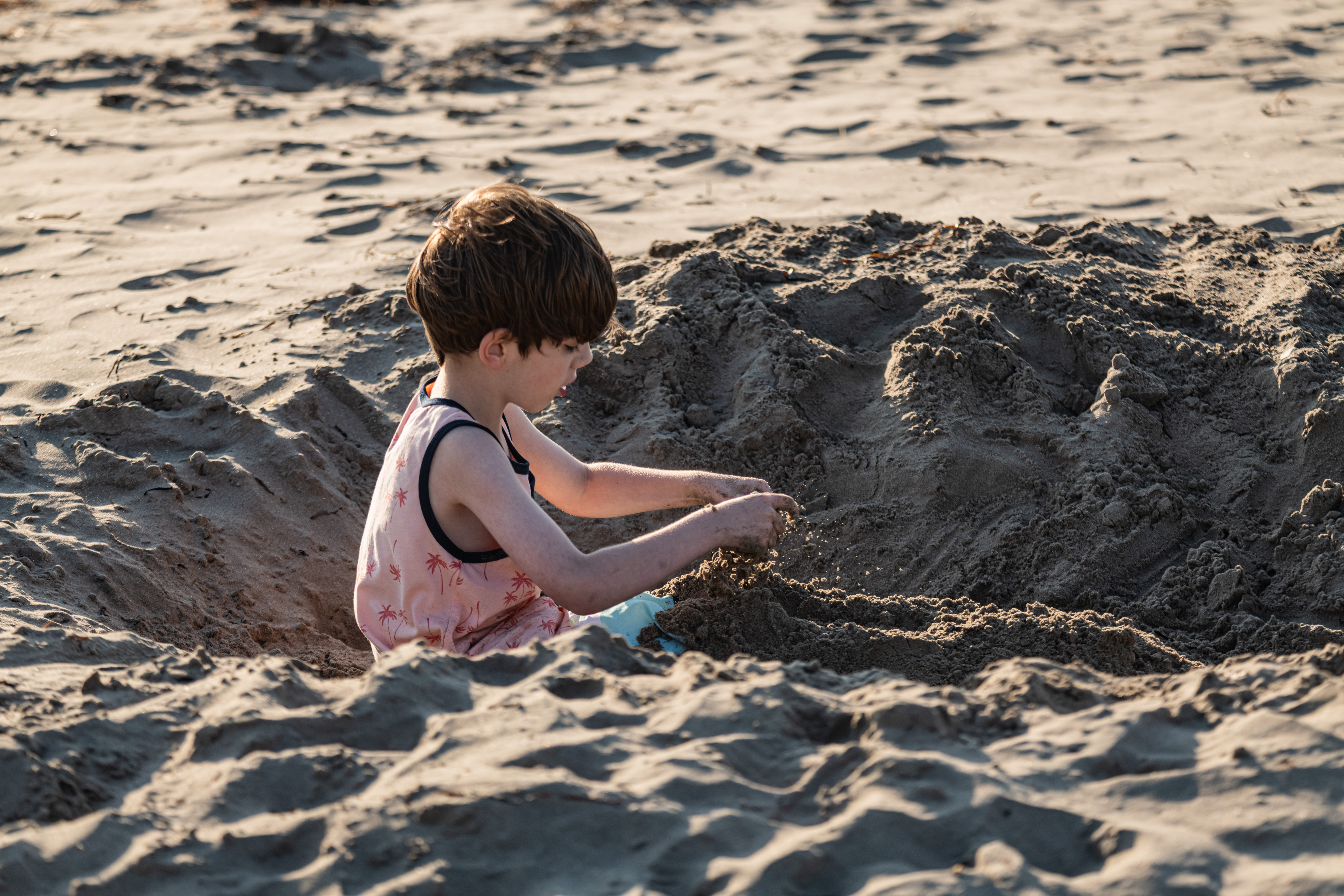
EXPERTS have warned beachgoers not to do a common activity that has previously proved to be fatal.
Every year, thousands of Brits flock to the beach, often unaware of the dangers of digging deep holes.
Tourists should never dig deeper than the knee height of the shortest person in their group - with two feet being the maximum depth, according to experts.
In February, a seven-year-old girl died after a five-foot hole she and her brother dug in the sand on a Florida beach collapsed on her, burying her alive.
Despite several people attempting to rescue her, the hole continued to collapse, and more sand poured in.
Escaping from a collapsed sand hole is almost impossible.
Digging, tunnelling, jumping and falling into holes have all led to collapses.
Research suggests that more people have died of sand burial suffocation than shark attacks, according to the coastal science expert.
From 1997 to 2007, there were 31 deaths, mostly children, in the US due to collapsing sand holes.
During the same period, 21 people were buried under the sand but survived, many requiring CPR.
Most read in Travel
Victims of sand burial suffocation ages tend to range from 3 to 21, the expert claimed.
Sand is most stable when wet due to the surface tension between water and sand grains.
A hole in the beach remains secure as long as the sand is moist.
Once it dries, the surface tension is lost and the hole collapses.
It can also collapse if someone stands next to it, adding extra weight.
The heavy grains of sand fill the open spaces making it impossible for anyone trapped down there to breathe.
Unlike skiers in an avalanche, you cannot use your hand to form an air pocket because sand is a lot heavier than snow.
Rescuing someone from a collapsed sand hole is extremely challenging as it is unstable.
As people scoop away the sand to free the victim, the hole continues to collapse under their weight and re-fill with sand.
There are around three to five minutes to save a person trapped under the sand before they suffocate.
If ever someone needs rescuing after being buried in sand, the focus needs to be on exposing their mouth and removing sand from the top of their chest, the expert claimed.
Too many people crowding around the scene can cause more harm than good.
Instead, only two to three people should be focused on the victim while others work on clearing the sand away from the wider excavation area.
Sandhole collapses can happen suddenly and in situations that don't seem dangerous.
Even shallow holes have been known to injure beachgoers, ruining their holiday.
Be sure to look out for holes on your next beach trip and fill them as soon as possible.
Read More on The US Sun
It comes after an alarming video showed tourists at a British holiday hotspot being ordered to leap from their ferry into the sea.
And holidaymakers heading across the channel this summer have warned of a fatal paralysing virus after cases were reported in Spain and Italy.
What to do if someon is trapped under sand at the beach
- Focus on exposing their mouth so they can breathe.
- Work on removing the sand from the top half of their chest to alleviate the pressure on vital organs needed for breathing.
- Only two to three people should be focused on the victim.
- The others should work on excavating the area around the victim.
- Call for Fire and ambulance emergency services immediately.
- There are around three to five minutes before the person trapped under the sand runs out of air.








